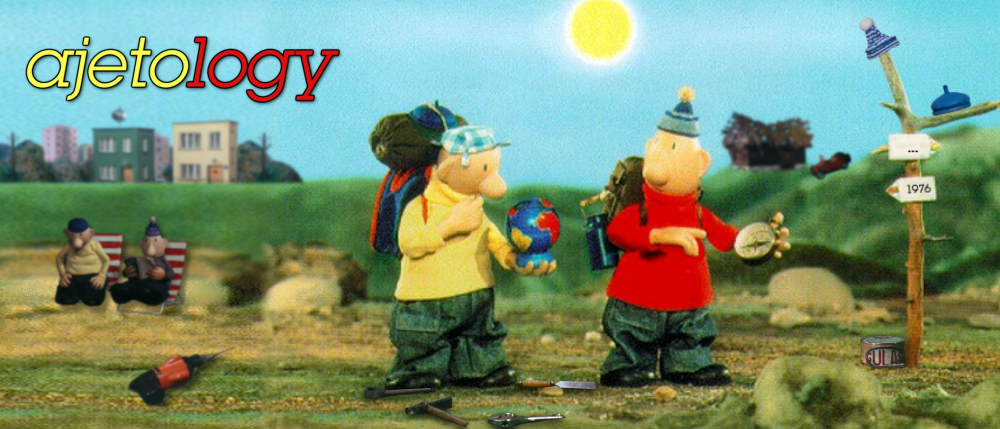When reading articles about Pat & Mat, you will often find a sentence reading something like this: "It was in the first TV episode Tapety where they got their definitive look." On the face of it (pun intended), that's a mostly correct statement. However, I would say that the final important change to Pat and Mat's look is a subtle one which happened in 1982, specifically in the first of that year's episodes, Sťahovanie. That change would the last one to shape the characters into the ones we know and love today.
The handymen before and after 1982 were identical ― except for their faces. The faces were redesigned at that point; the eyes became thinner, their shape going from thick ovals to either an almost rectangular shape or a small circles, depending on the puppets used. The mouths were also changed. Before, different expressions were used to convey the two's emotions, with a circle representing shock or surprise and :( representing what it usually does, sadness and disappointment.
 |
| Mat going from sad... |
 |
| ... to confused in a matter of frames |
 |
| the duo shocked at the end of Grill |
Even though they were possibly made to conserve time, these changes brought about several fresh ways to handle the characters and imbued them with more comedic potential. When their eyes became smaller, Pat and Mat became less goofy, a bit more aware of what they were doing. This gave their DIY failures an even bigger punch as the "heroes" could be held even more responsible for their complete failures.
























